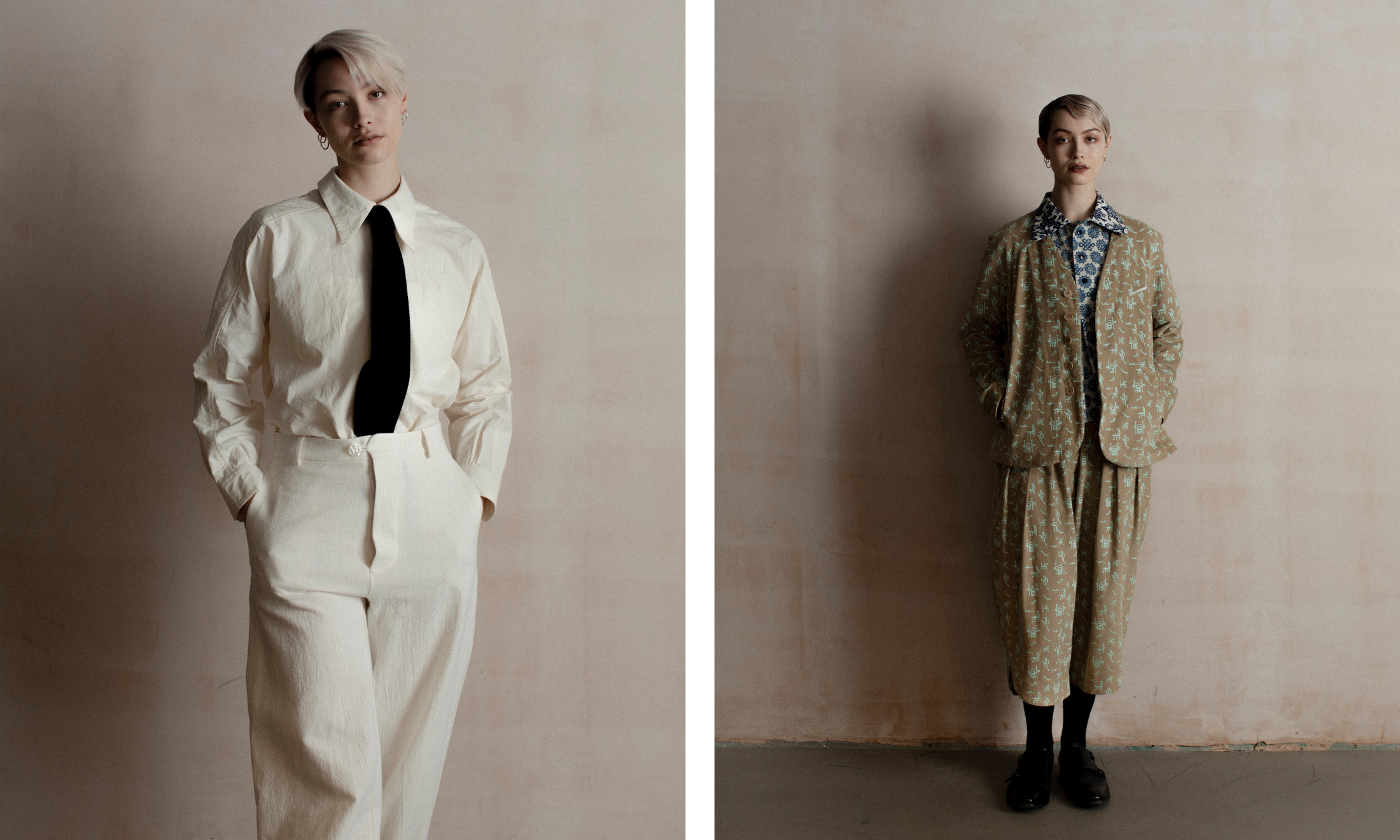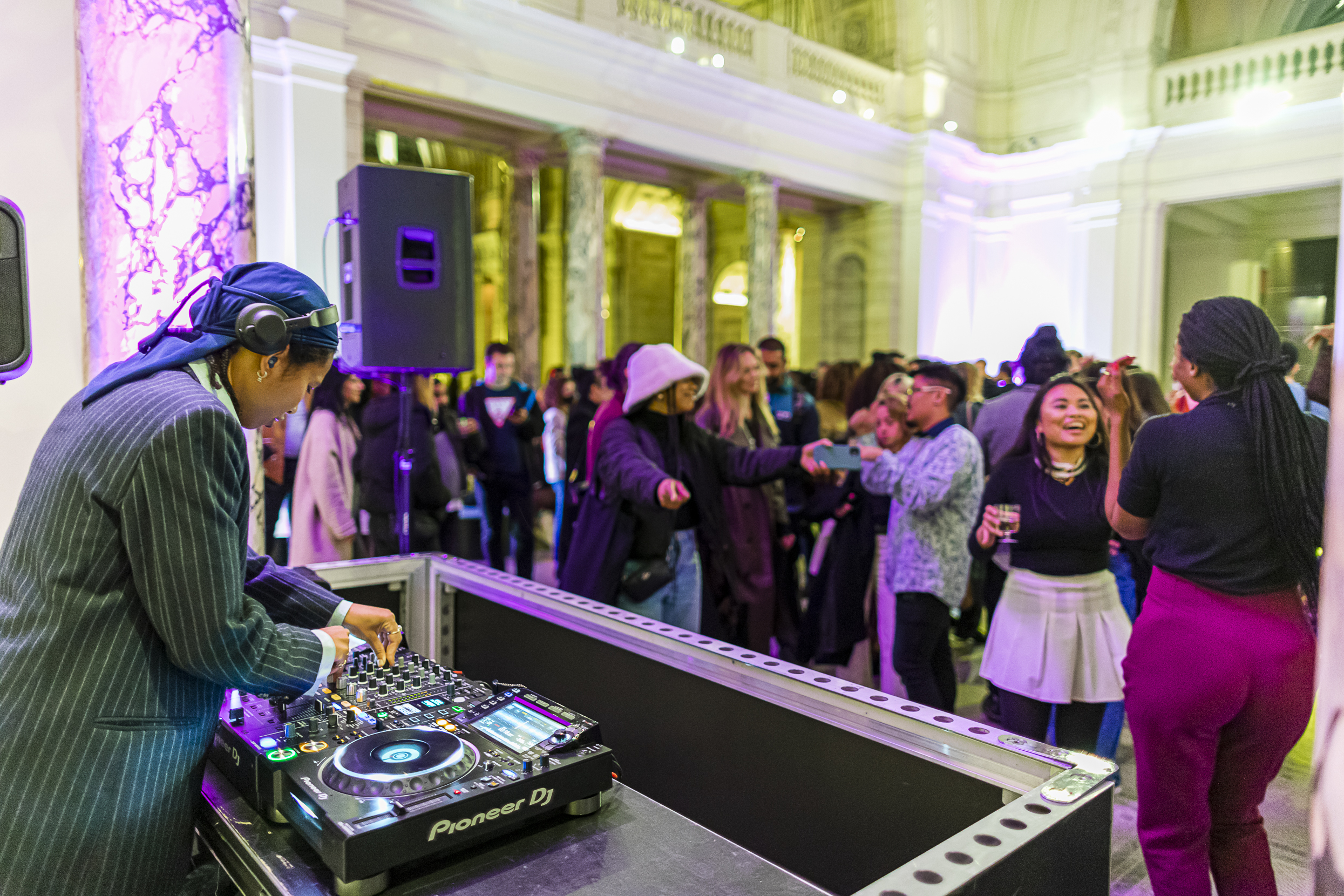
Josephine Philips courtesy of Sojo, Canva
How a new clothing repairs app wants to bring lasting change to the fashion industry
Sojo app founder Josephine Philips speaks to gal-dem about her love for second-hand clothing, supporting independent seamsters, and sustainable fashion.
Zainab Mahmood
21 Sep 2021
On a rainy Tuesday afternoon during my lunch hour at home, I was excited to speak to Josephine Philips, a fellow slow fashion enthusiast, about what I assumed would be our shared love of second-hand fashion. It felt appropriate to start by gushing over my second-hand tracksuit bottoms with rainbow stripes down the sides, a pair I’d purchased over the weekend in Brighton at a luxury consignment store – one of my favourite ways to shop ethically and sustainably.
It turns out Josephine does, indeed, love to shop second-hand. This, in combination with lacking sewing skills and leading a busy lifestyle, led her to found Sojo – a Deliveroo-style app for clothing repairs.
Since running a pilot version of the app in London in January 2021, Sojo has been working with ten seamster businesses across Zones 1 and 2 in London, with plans to expand to Zones 3 and 4 shortly, and has grown its team to six people and 15 freelance riders. With nearly 1,000 alterations and repairs completed via the app, Sojo is helping busy Gen Z and millennial thrifting enthusiasts get more wear out of their second hand treasures without the faff of dropping off and picking up items for repair.
“Most people in the sustainable fashion space actually say they’re a sort of a recovering fast fashion hypocrite,” says 23-year-old Josephine. Frustrated that the fast fashion industry is built on the exploitation of Black and Brown women garment workers in the Global South – Clean Clothes Campaign reports that no major clothing brand can prove that workers making their clothing in Asia, Africa, Central America or Eastern Europe are paid enough to escape poverty – Josephine moved away from fast fashion as a university student and turned to second-hand options instead: “I allowed myself to still consume whilst also [not] supporting and fuelling these sort of old white men at the top of these companies.”
“No major clothing brand can prove that workers making their clothing in Asia, Africa, Central America or Eastern Europe are paid enough to escape poverty”
While Josephine found unique vintage pieces that she loved, she found sizing was an issue and the process of altering clothes was too time-consuming. Then the idea for Sojo struck her: “I just thought, ‘this could be made so much easier’. Wouldn’t it be great if I could just book it on my phone the same way I did Treatwell or Ubers or food?”
As a young Black woman with strong feminist, anti-capitalist values, Josephine’s disbelief at the poor treatment of women of colour in the fashion industry – 80% of garment workers are women and only 2% earn a living wage – drove her away from fast fashion. This knowledge and frustration along with her growing pile of second-hand loves not making it out into the world prompted Josephine to take to the streets of her native city London to source skilled, reliable seamsters to partner with. Josephine tells me it was initially “an uphill battle” to turn these seamsters with up to 45 years of experience on to the idea of an app bringing them business.
“We want to help them tap into a younger demographic that’s really engaged in sustainable fashion. Fundamentally, at its most basic level, we just wanted to bring them more business,” says Josephine. After the seamsters trialled Sojo and learnt that they could continue working during lockdowns when their shops were closed, the app became a consistent source of income.

Sojo users can learn about the seamsters altering their clothes through the stories shared on the app; Josephine tells me this “was incredibly intentional” due to the lack of transparency in the fashion industry more broadly – Fashion Revolution reports in its Transparency Index that only 47% of brands disclose their manufacturing facilities. Josephine believes that “if everything was more transparent and the fast fashion users really knew how the individual was being treated who made their item, that probably would shift quite a lot of consumer behaviour.”
Furthermore, the intention behind forming partnerships with existing local seamster businesses as opposed to recruiting in-house seamsters was to support the local economy and foster a sense of community. “The fact that you know you’re supporting Hassan down the road feeds into the community culture and lets people know that there’s people behind their tailoring.”
As much as locality and community are at the heart of the service Sojo offers, Josephine asserts that these values aren’t necessarily the solution to the exploitative nature of the fashion industry that slow fashion activists and educators are striving for. “What we’re fighting for is ethical manufacturing in the Global South. I think that that could be very powerful and beneficial for those countries and those people if it were done right.”
“What we’re fighting for is ethical manufacturing in the Global South. I think that that could be very powerful and beneficial for those countries and those people if it were done right”
Josephine Philips
In addition to having a positive impact on local business and highlighting the hands and faces behind our clothing, Sojo is benefiting the environment by extending the life of our clothes. According to Oxfam, consumers in the UK alone send 13 million items of clothing to landfill every week. Sojo is tackling this by facilitating more second-hand shopping, through “breaking the barrier to entry of sizing” as well as taking clothing “away from the linear economy” and feeding into a circular economy instead, says Josephine.
Beyond the physical repair of clothes, Sojo is encouraging circular fashion through education, using their Instagram account to share information on garment workers’ rights and the environmental impact of the fashion industry with their followers, and platforming other circular fashion businesses.
“I’ve kept [education] part of it mainly for me and for how I feel and for how I want Sojo to shift things beyond repairing and altering,” Josephine tells me. This approach has ultimately fostered a strong online community of individuals who care about the same issues that sparked the idea for Sojo, and has engaged newcomers who simply wanted a convenient clothing repairs service in deeper conversations about the fashion system.
Josephine believes that this shift in consumer culture could be what causes brands to change, rethink and introduce repair schemes so that their products can be used and loved for longer. “Most brands do have it in their strategy or agenda to be shifting and changing somehow. I think that’s indicative of a total bottom-up approach: from consumers at the bottom requiring that from brands.” Sojo will be a key player in making this shift in-store as it begins piloting partnerships with vintage clothing retailer Beyond Retro and charity TRAID.
Even if more high-street stores introduce repair schemes, Josephine says that fast fashion brands “are so inherently reliant on high production, low-cost and high volume. Those three things together lead to disposability, exploitation of labour and inherently lead to things that are not sustainable and ethical fashion.”
Right now, Sojo’s main appeal is as a Deliveroo-style app for clothing repairs. But with Josephine emphasising transparency and her own values in the business, it has the power to be so much more: a source of inspiration, education and motivation to demand a fairer fashion industry from the brand-owner billionaires.









